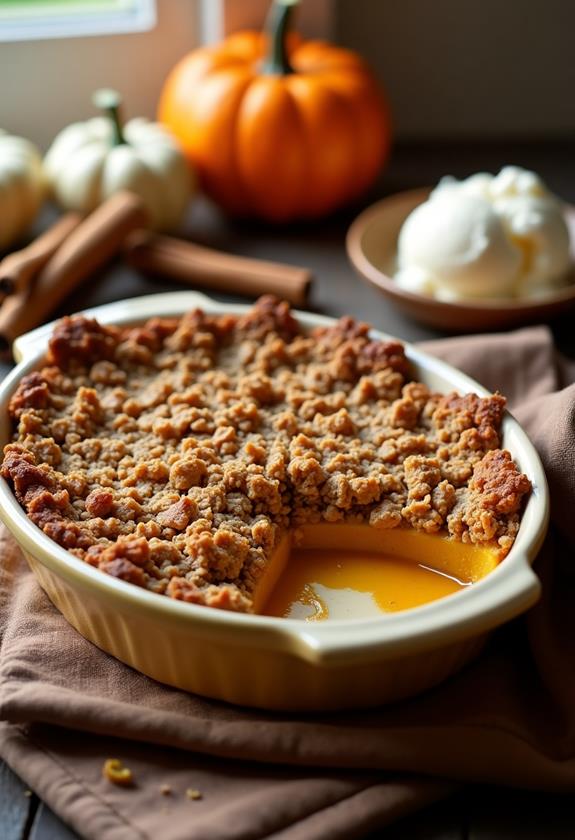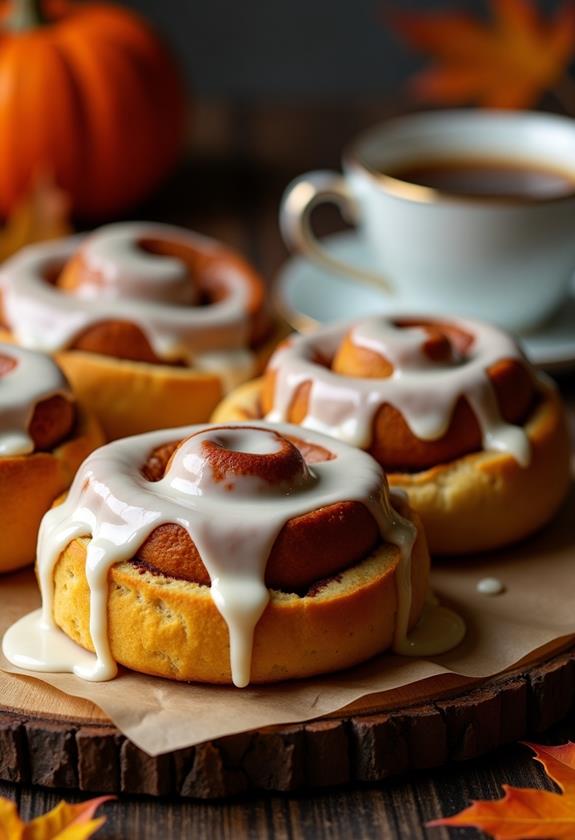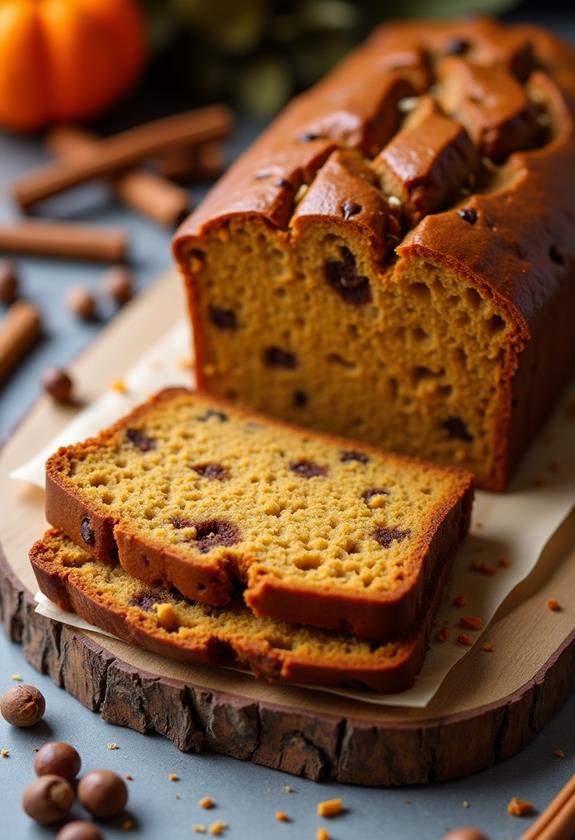Vanilla French Beignets Recipe
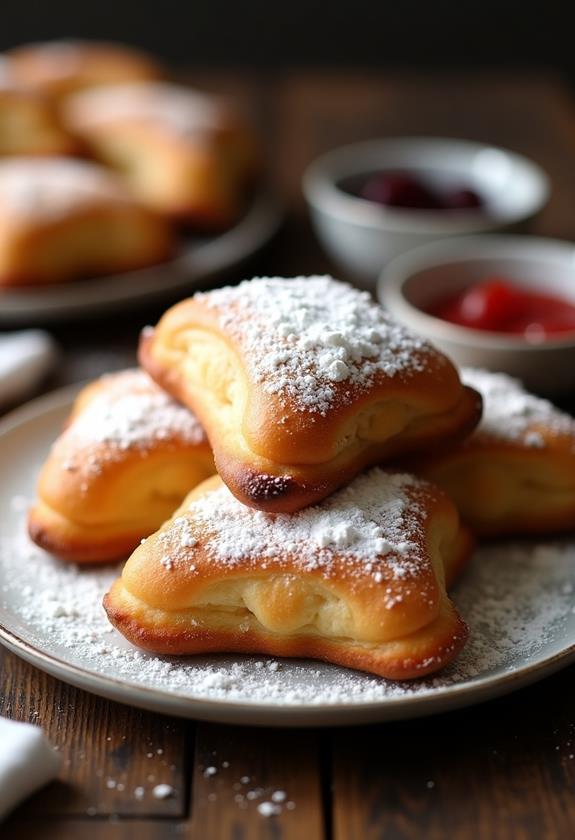
Imagine waking up to the aroma of freshly fried Vanilla French Beignets, their golden crust giving way to a soft, vanilla-infused center. You might think these delicate pastries are reserved for cafes in Paris, but you can easily create them in your own kitchen. The process starts simply with dissolving yeast in warm water, but there's a key step that elevates these beignets to a new level of flavor. Have you ever wondered how a touch of vanilla transforms such a classic treat? This isn't just about a recipe; it's about mastering a culinary secret.
Recipe
Vanilla French beignets are a classic pastry treat that combines the rich flavors of vanilla with a light and fluffy texture. Originating from France, these delightful confections are perfect for breakfast, brunch, or dessert. The key to making perfect beignets is mastering the dough consistency and guaranteeing the oil is at the right temperature for frying. With patience and practice, you can create a batch of beignets that will impress any pastry lover.
To begin making vanilla French beignets at home, you'll first want to prepare the dough. This involves dissolving active dry yeast in warm water, then mixing in sugar, salt, an egg, evaporated milk, and vanilla extract. Gradually incorporate the flour and softened butter until the dough is smooth.
Allow the dough to rise in a warm place until it has doubled in size, which typically takes between 1.5 to 2 hours. Once the dough is ready, roll it out, cut it into squares, and fry them until golden brown.
Ingredients:
- 2 1/4 teaspoons active dry yeast
- 3/4 cup warm water
- 1/4 cup granulated sugar
- 1/2 teaspoon salt
- 1 large egg
- 1/2 cup evaporated milk
- 1 teaspoon vanilla extract
- 3 1/2 cups all-purpose flour
- 2 tablespoons unsalted butter, softened
- Vegetable oil for frying
- Powdered sugar for dusting
To cook the beignets, begin by heating vegetable oil in a deep fryer or large pot to 360°F (182°C). Once the oil reaches the desired temperature, carefully add the dough squares in batches, frying each one until it's golden brown on both sides, approximately 2 to 3 minutes per side.
Use a slotted spoon to remove the beignets from the oil and let them drain on paper towels. Once drained, generously dust the beignets with powdered sugar before serving.
For the best results, ascertain that the oil is consistently at the correct temperature to avoid undercooking or making the beignets too greasy. If you're unsure, use a thermometer to monitor the oil's temperature.
The dough's rising time can vary based on room temperature, so keep an eye on it and make sure it doubles in size. To add a personal touch, consider serving the beignets with fruit preserves or a dipping sauce. Enjoy the beignets fresh for the best taste and texture.
Cooking Steps
Let's get started on your vanilla French beignets by waking up the yeast—just dissolve it in warm water like it's taking a cozy bath.
Next, toss in the sugar, salt, and egg, giving it a good mix that even a DJ would envy.
Once you're in the groove, mix in the evaporated milk, add a splash of vanilla extract for that classic flavor, and slowly fold in the flour, turning your mixture into a smooth, irresistible dough.
Step 1. Dissolve Yeast in Warm Water
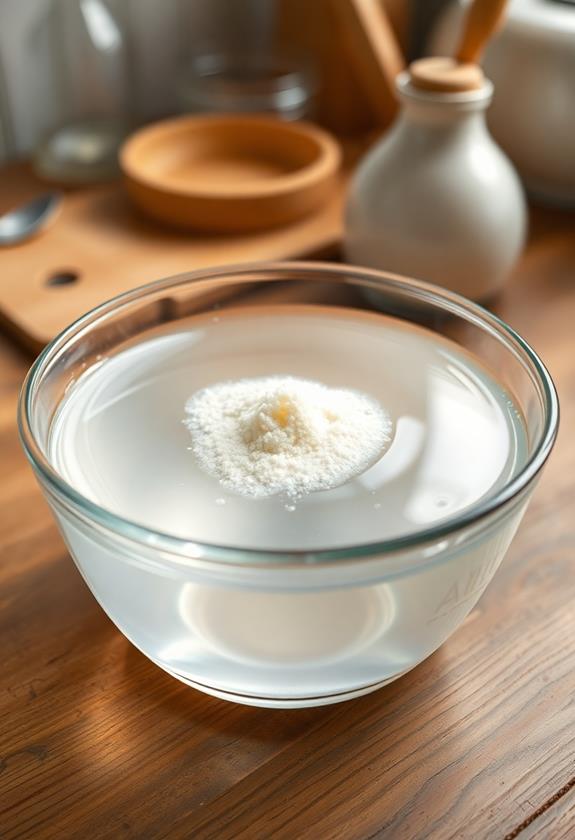
Start by mixing the yeast into the warm water, letting it sit for about 5 minutes until it becomes frothy.
This is a vital step because frothy yeast means it's alive and kicking, ready to work its magic on your dough.
Think of it as waking up a sleepy friend with a gentle nudge. If it doesn't bubble up, your yeast might be past its prime, so try again with fresh yeast.
The water should be warm but not hot, about the temperature of a relaxing bath.
Too hot, and you'll end up with sleeping yeast, not ideal for our beignets!
Once frothy, you're set to move on to the next ingredients, ready for some flavorful transformation.
Step 2. Add Sugar, Salt, and Egg

The delightful dance of flavors begins as you add granulated sugar, salt, and a large egg to the frothy yeast mixture.
Watch as the sugar dissolves, sweetening the brew while the salt balances everything, like a culinary yin and yang.
Crack that egg with confidence; it's the glue holding your beignet dreams together.
Stir gently, ensuring the egg is fully incorporated, transforming the mixture into a creamy concoction.
This step not only enhances the flavor but also enriches the dough, promising fluffy, golden beignets.
Don't rush—let each ingredient meld, creating a foundation for your pastry masterpiece.
Step 3. Mix in Evaporated Milk

With the egg mixture ready, it's time for the creamy richness of evaporated milk to join the blend.
Pour in the evaporated milk slowly, and stir gently, as if you're coaxing it to mingle happily with its new friends. Don't rush—it's not a race, but a leisurely stroll to deliciousness. The milk adds a luscious texture that makes your beignets irresistibly fluffy, so take a moment to appreciate the creamy swirl.
Remember, patience in mixing guarantees the milk is evenly distributed, like spreading good vibes at a party. If any stubborn clumps resist, use a whisk to show them who's boss.
Keep stirring until the mixture is smooth. You're on your way to creating a dough that dreams are made of!
Step 4. Add Vanilla Extract, Mix
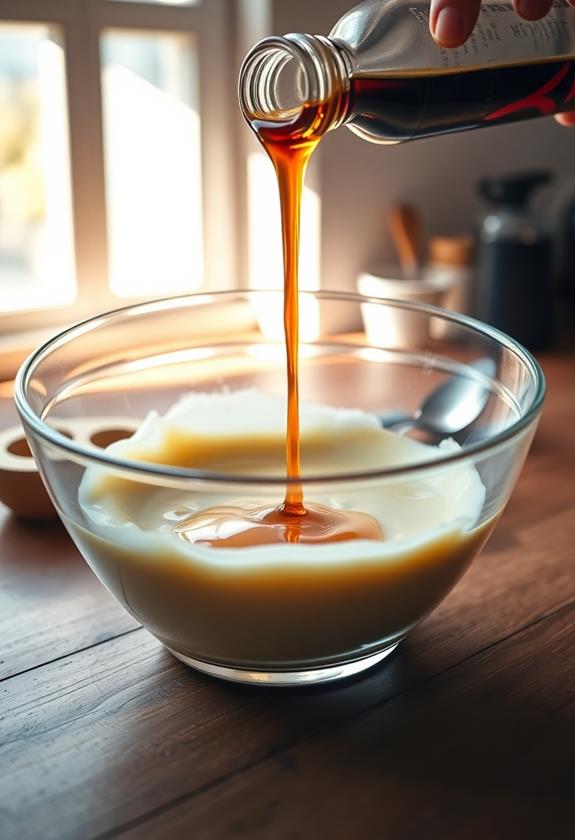
Amidst the creamy mixture you've just perfected, it's time to introduce the vanilla extract. Grab your trusty measuring spoon and pour in a teaspoon of vanilla. This little addition will work its magic, infusing your beignet batter with a warm, aromatic sweetness that's simply irresistible.
Now, wield your mixing spoon with confidence, stirring the vanilla into the mix. Make sure everything is well-combined, ensuring no pocket of vanilla goes unnoticed—after all, you wouldn't want any beignet to feel left out!
As you blend, the aroma will start to tease your senses, hinting at the deliciousness to come. Keep stirring until the vanilla is fully incorporated, and your batter resembles a smooth, harmonious blend.
Take a moment to appreciate your handiwork!
Step 5. Gradually Incorporate the Flour
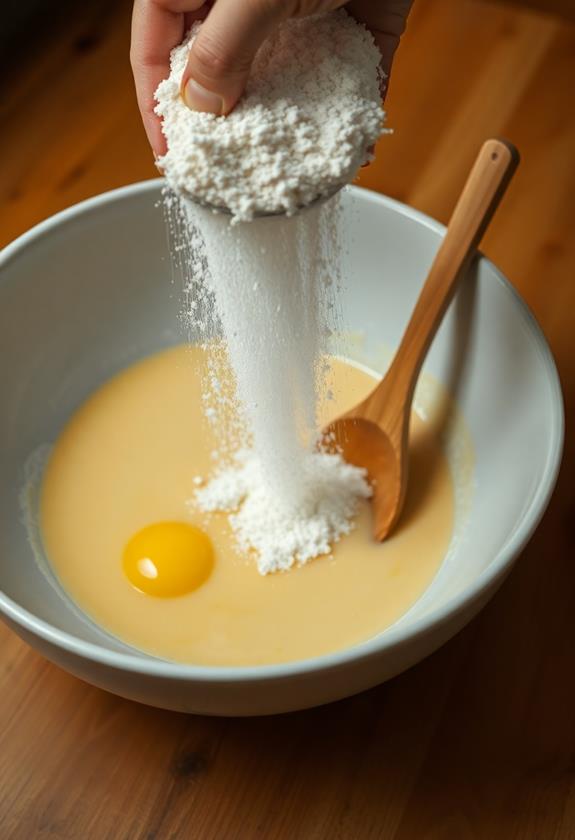
Having infused the batter with vanilla's warmth, it's time to turn your attention to the flour. Gradually add the flour, about a half-cup at a time, and stir gently.
This step's like introducing flour to a party—it needs time to mingle without getting overwhelmed. If you dump it all at once, you might end up with a clumpy mess that even the best DJ can't fix.
Keep the mixing smooth and steady, ensuring the flour is fully incorporated before adding more. You'll notice the mixture transforming from a liquid party into a dough gathering.
If you find the dough sticking too much to your fingers, it's probably hinting for just a touch more flour. Don't rush this—patience makes perfect beignets!
Final Thoughts
Crafting your own batch of vanilla French beignets at home is a rewarding experience that combines culinary skill with a touch of indulgence.
You've braved the dough, tackled the oil, and now, you're ready to enjoy the fruits—or rather, the pastries—of your labor. The aroma of freshly fried beignets wafting through your kitchen is a treat in itself.
Remember, practice makes perfect, and each batch will get easier and more delicious. Don't be surprised if you find yourself sneaking an extra beignet or two—they're that irresistible.
Share them with friends or keep them all to yourself; no judgment here. Just make sure you've got plenty of powdered sugar on hand, because who doesn't love a little extra sweetness?
Frequently Asked Questions
Can I Substitute Evaporated Milk With Regular Milk in the Beignet Recipe?
Yes, you can substitute evaporated milk with regular milk in the beignet recipe. Use the same amount, but remember that evaporated milk is thicker, so your dough might be slightly less rich but still delicious.
How Do I Store Leftover Beignets to Maintain Freshness?
To keep leftover beignets fresh, store them in an airtight container at room temperature for up to two days. Reheat them briefly in the oven or air fryer to restore their crispiness before enjoying again.
Is It Possible to Bake Beignets Instead of Frying Them?
Yes, you can bake beignets instead of frying them. Preheat your oven to 375°F (190°C), place beignets on a baking sheet, and bake for 10-12 minutes. They won't be as crispy but still delicious.
Can I Add Other Flavors or Ingredients to the Beignet Dough?
You can definitely add other flavors or ingredients to the beignet dough. Try mixing in cinnamon, nutmeg, or citrus zest for extra flavor. Adding chocolate chips or fruit pieces can also make them more interesting and delicious.
What Are Some Common Mistakes to Avoid When Making Beignets?
You might make mistakes like overheating the oil, causing uneven cooking, or letting the dough rise too little or too much. Don't overcrowd the fryer, and guarantee the dough's consistency is smooth for best results.
Conclusion
You've made it to the end, and now you've got your own batch of delicious vanilla French beignets! Just imagine biting into that golden, fluffy goodness, dusted with powdered sugar—it's like a little piece of heaven. Whether you're savoring them with fruit preserves or a sweet dipping sauce, these treats are sure to impress. So grab a beignet, take a moment to enjoy the fruits of your labor, and don't forget to share the joy with others!

